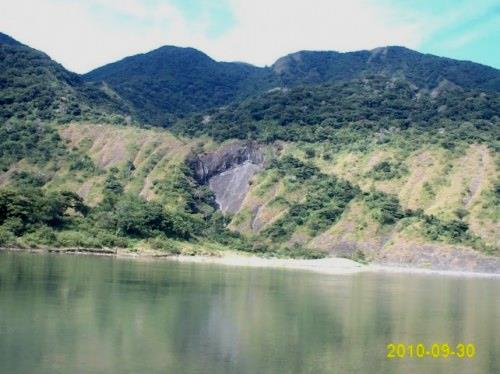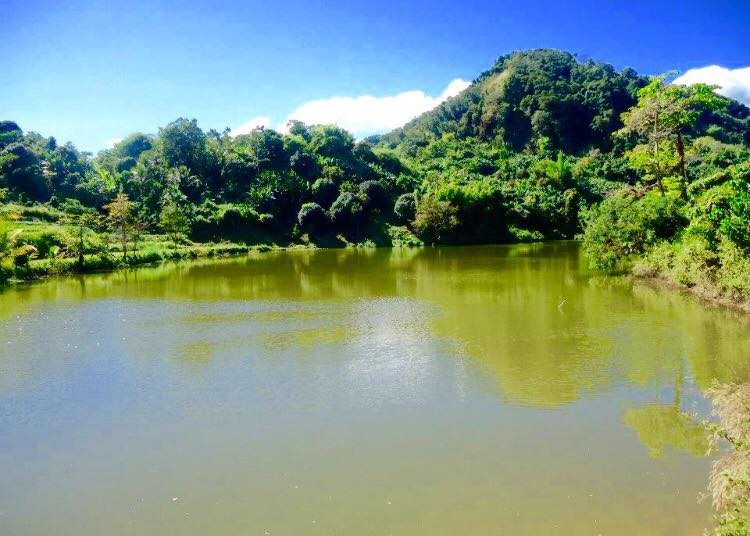Villaviciosa, Abra
Prior to the creation of the town of Villaviciosa, the barrios of Tamac, Bollilising, Tuquib, Cal-lao, Calao (Poblacion), Ap-apaya and Lumaba were said to have long been established as independent settlements. Each settlement was governed by a chieftain then known as “Lakay”. Lakay ruled over his constituents with absolute authority under the customs and beliefs of the people.
When the Spanish authorities came somethe during the last few decades of the 19th century, they discovered the existing settlements. While the Spaniards recognized the independence of each settlement, they deemed it worthwhile to change the nature of how these settlements was governed by giving the status of barrio to each settlement. Each barrio was to be governed by a qualified native given the title of Capitan.the Capitan was to rule in accordance with the laws that must have been enacted for the benefit of the people instead of in accordance with the beliefs and customs as previously practiced. On the other hand, the Spanish missionaries discovered that the native inhabitants belonged to a tribe of non-Christians and called them Tinguians, a named derived from an old ocological term, “Tingi”, or men of the hills. Seeing the inhabitant non-Christians, the missionaries believed it propitious to establish a mission in the area. In the year 1884, a parish was established to be used as a pivot area for the spread of the Christian gospel. The parish was called the Parish of Villaviciosa, centered at Barangay Calao knowing to its strategic location. The name of the parish was adopted from the name of a medieval city in Southern Spain particularly situated at the bank of a river known as the Rio de Villaviciosa. The parish which had 3,900 people, had its patron saint Saint Lawrence. The parish was listed as one of the parishes of the Prelature of Bangued, Abra. However, it was included within the jurisdiction of the Pueblo de Lumaba, a newly organized municipality temporarily centered in Lumaba barrio, particularly at sitio, Naguilian at the west bank of the Sialang River, west of the barrio proper. The pueblo was under the newly baptized Tinguian named Madagyen as the governadorcillo.
In the year 1885, the Pueblo de Lumaba became Poblacion del Pilar with the center of the town moving to Cagutongan further west of Lumaba barrio. Meanwhile, the parish of Villaviciosa remained a subsidary of the parish of Pilar under Fr. Jose Prada. Suddenly, the work of the mission was interrupted during the revolution against the Spaniards.
The Americans occupied Villaviciosa and the municipality of Pilar in 1901. In 1902, peace was declared between the Americans and the Filipinos. The Americans started their administration of the municipality in 1903 by ordering a census of the inhabitants of the barrios of Villaviciosa if the number is enough to form a town. So the leaders at the time adopted and signed a resolution drafted by Lorenzo Anioay of Poblacion, Villaviciosa who was a former municipal president of Poblacion del Pilar, for the creation of a new town reviving the former parish and recognizing it as a political unit. The leaders who adopted and signed the resolution included Malmatan of Tamac, Capitan Layao of Bollilising, Sad-ang of Tuguib, Mangadsil of Cal0lao, Capitam Culangan of Calao (Poblacion), Mamerto Paderes of Ap-apaya and Capitan Balanay of Lumaba. In 1904, as a result of the movement, the town of Villaviciosa was created.
The first center of Villaviciosa was at the former seat of the Pueblo de Lumaba, ast Sitio Naguilian. Later, in 1908, the center was transferred to its present site at Barangay Calao which, until now, is the Poblacion.
In 1917, under the Commonweath, the township status of Villaviciosa was changed into a regular municipality. Villaviciosa was among other townships of Abra who change status to municipality when the province ceased as a sub-province of Ilocosor Sur and became a regular province. With the addition of sitio Lagiosian, formerly part of Luba, and Mabilong, Forrmerly a part of San Isidro, the land area of Villavisciosa changed.
With coming of Japanese in 1942, soldiers were sent to a detachment at the town to capture American and Filipino soldiers who, instead of surrendering, resorted to guerilla tactics. In 1943, the Japanese soldiers returned to Bangued where they burned the Poblacion including Barrio Lumaba in retaliation to the killing of some of their members by the guerillas: At the end of 1943, guerilla soldiers occupied Villavisciosa. They ordered the inhabitants to come out hiding and return to rebuild their homes. They also ordered the available local officials to rebuild the town hall and to reconstruct the records of the town. However, they took time in rounding up some civilians whom they suspected of having collaborated with the Japanese and had them executed. Among those executed were Doming Pescozo, former municipal president; Angel Bañes, ex-teacher; Promitivo Nanangan, and TomasBañes.
With the expulsion of the Japanese in 1945, restoration of the municipality began. The first work of the municipal officials was to complete the reconstruction of the burned town hall and to put order to reconstituted records of the municipal office.
The municipality is politically subdivided into 8 barangays, namely: Ap-apaya, Bollilising, Callao, Lap-lapog, Lumaba, Poblacion, Tamac and Tuquib.
When the Spanish authorities came somethe during the last few decades of the 19th century, they discovered the existing settlements. While the Spaniards recognized the independence of each settlement, they deemed it worthwhile to change the nature of how these settlements was governed by giving the status of barrio to each settlement. Each barrio was to be governed by a qualified native given the title of Capitan.the Capitan was to rule in accordance with the laws that must have been enacted for the benefit of the people instead of in accordance with the beliefs and customs as previously practiced. On the other hand, the Spanish missionaries discovered that the native inhabitants belonged to a tribe of non-Christians and called them Tinguians, a named derived from an old ocological term, “Tingi”, or men of the hills. Seeing the inhabitant non-Christians, the missionaries believed it propitious to establish a mission in the area. In the year 1884, a parish was established to be used as a pivot area for the spread of the Christian gospel. The parish was called the Parish of Villaviciosa, centered at Barangay Calao knowing to its strategic location. The name of the parish was adopted from the name of a medieval city in Southern Spain particularly situated at the bank of a river known as the Rio de Villaviciosa. The parish which had 3,900 people, had its patron saint Saint Lawrence. The parish was listed as one of the parishes of the Prelature of Bangued, Abra. However, it was included within the jurisdiction of the Pueblo de Lumaba, a newly organized municipality temporarily centered in Lumaba barrio, particularly at sitio, Naguilian at the west bank of the Sialang River, west of the barrio proper. The pueblo was under the newly baptized Tinguian named Madagyen as the governadorcillo.
In the year 1885, the Pueblo de Lumaba became Poblacion del Pilar with the center of the town moving to Cagutongan further west of Lumaba barrio. Meanwhile, the parish of Villaviciosa remained a subsidary of the parish of Pilar under Fr. Jose Prada. Suddenly, the work of the mission was interrupted during the revolution against the Spaniards.
The Americans occupied Villaviciosa and the municipality of Pilar in 1901. In 1902, peace was declared between the Americans and the Filipinos. The Americans started their administration of the municipality in 1903 by ordering a census of the inhabitants of the barrios of Villaviciosa if the number is enough to form a town. So the leaders at the time adopted and signed a resolution drafted by Lorenzo Anioay of Poblacion, Villaviciosa who was a former municipal president of Poblacion del Pilar, for the creation of a new town reviving the former parish and recognizing it as a political unit. The leaders who adopted and signed the resolution included Malmatan of Tamac, Capitan Layao of Bollilising, Sad-ang of Tuguib, Mangadsil of Cal0lao, Capitam Culangan of Calao (Poblacion), Mamerto Paderes of Ap-apaya and Capitan Balanay of Lumaba. In 1904, as a result of the movement, the town of Villaviciosa was created.
The first center of Villaviciosa was at the former seat of the Pueblo de Lumaba, ast Sitio Naguilian. Later, in 1908, the center was transferred to its present site at Barangay Calao which, until now, is the Poblacion.
In 1917, under the Commonweath, the township status of Villaviciosa was changed into a regular municipality. Villaviciosa was among other townships of Abra who change status to municipality when the province ceased as a sub-province of Ilocosor Sur and became a regular province. With the addition of sitio Lagiosian, formerly part of Luba, and Mabilong, Forrmerly a part of San Isidro, the land area of Villavisciosa changed.
With coming of Japanese in 1942, soldiers were sent to a detachment at the town to capture American and Filipino soldiers who, instead of surrendering, resorted to guerilla tactics. In 1943, the Japanese soldiers returned to Bangued where they burned the Poblacion including Barrio Lumaba in retaliation to the killing of some of their members by the guerillas: At the end of 1943, guerilla soldiers occupied Villavisciosa. They ordered the inhabitants to come out hiding and return to rebuild their homes. They also ordered the available local officials to rebuild the town hall and to reconstruct the records of the town. However, they took time in rounding up some civilians whom they suspected of having collaborated with the Japanese and had them executed. Among those executed were Doming Pescozo, former municipal president; Angel Bañes, ex-teacher; Promitivo Nanangan, and TomasBañes.
With the expulsion of the Japanese in 1945, restoration of the municipality began. The first work of the municipal officials was to complete the reconstruction of the burned town hall and to put order to reconstituted records of the municipal office.
The municipality is politically subdivided into 8 barangays, namely: Ap-apaya, Bollilising, Callao, Lap-lapog, Lumaba, Poblacion, Tamac and Tuquib.

